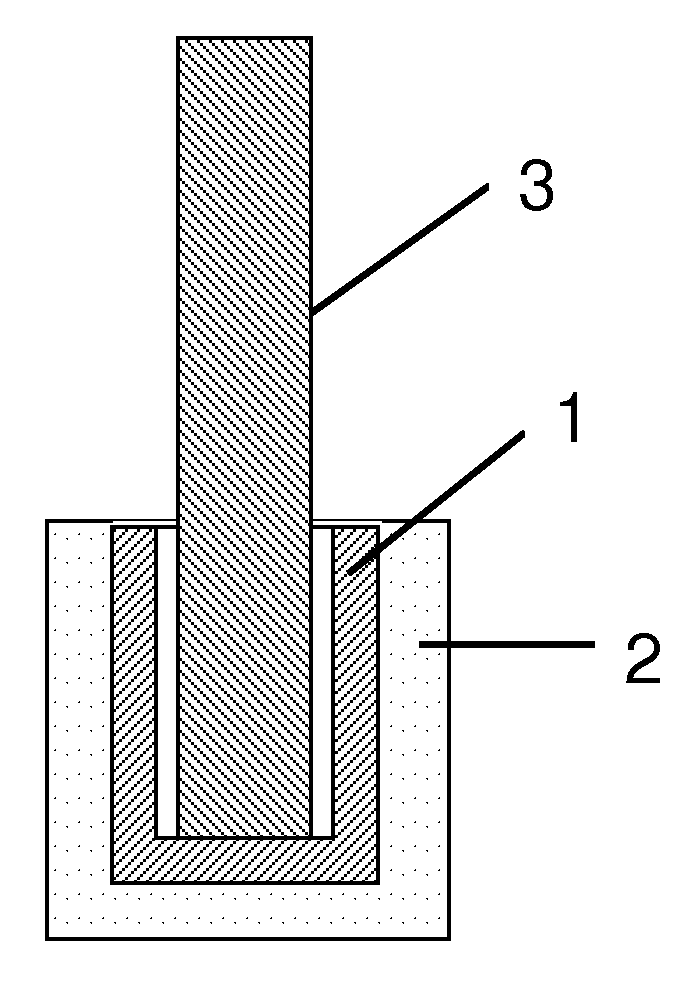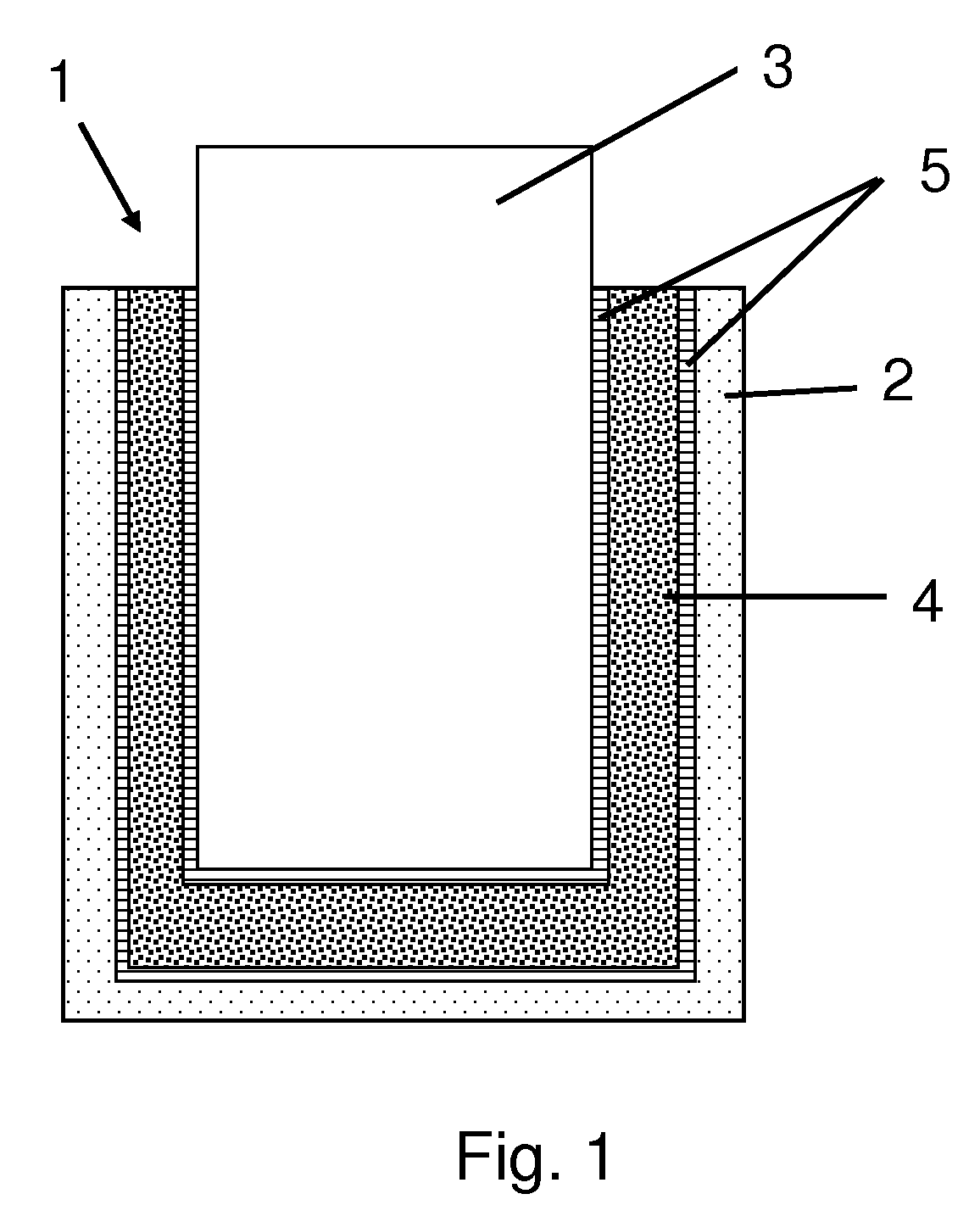Adhesive tape, particularly for bonding photovoltaic modules
a photovoltaic module and adhesive technology, applied in the direction of film/foil adhesives, heat collector mounting/support, pv power plants, etc., to achieve the effect of avoiding a relatively high pressure and a certain flexibility
- Summary
- Abstract
- Description
- Claims
- Application Information
AI Technical Summary
Benefits of technology
Problems solved by technology
Method used
Image
Examples
example 1
[0154]FIG. 2 shows the arrangement of a foamable adhesive tape 1, designed as an adhesive transfer tape, in a PV frame 2.
[0155]Adhesive tape 1 was produced by blending a solvent-containing acrylate adhesive, AC ester 1743 from National Starch, in a commercial paddle stirrer from Ika, with 5% by weight of Akzo Nobel type 51 DU 40 microballoons, and coating this blend, using a doctor blade, on to a release paper provided on both sides with a release. After drying at 23° C. for 240 minutes and at 70° C. for 15 minutes, the layer obtained on the release paper is a dry, unfoamed PSA layer which is homogeneously blended with unexpanded microballoons, having a thickness of 400 μm.
[0156]After converting to a width of 2.5 cm, the adhesive tape 1 was folded to a U-shape, so that the layer of composition is facing outwards (FIG. 2). This U-shaped adhesive tape was pressed into the frame 2, leaving a groove of 5.2 mm.
[0157]The frame 2 together with the adhesive tape 1 was sawn to the correct le...
example 2
[0163]To produce a silicone adhesive tape 1, a solvent-containing silicone PSA, PSA 45559 from Wacker, was blended, in a commercial paddle stirring mechanism from Ika, with 5% by weight of microballoons of type 51 DU 40 from Akzo Nobel, and this blend was coated out, using a doctor blade, on to a release film provided on both sides with a fluorosilicone release. After drying at 23° C. for 20 minutes and at 120° C. for 15 minutes, the layer obtained on the release film is a dry, unfoamed silicone PSA layer which is homogenously blended with unexpanded microballoons and has a thickness of 200 μm. To obtain a layer thickness of 400 μm for the silicone adhesive tape 1, two of the 200 μm silicone adhesive transfer tapes are laminated to one another.
[0164]Contact heating of the frame at 200° C. was carried out for 30 seconds for the foaming of the microballoons.
[0165]The tensile force needed to extract the laminate from the frame was approximately 46 N / cm.
example 3
[0166]To produce the silicone adhesive tape 1, a solvent-containing silicone PSA, PSA 45559 from Wacker, was blended, in a commercial paddle stirring mechanism from Ika, with 5% by weight of microballoons of type 51 DU 40 from Akzo Nobel, and this blend was coated out, using a doctor blade, on to a release film provided on both sides with a fluorosilicone release. After drying at 23° C. for 20 minutes and at 120° C. for 15 minutes, the layer obtained on the release film is a dry, unfoamed silicone PSA layer which is homogenously blended with unexpanded microballoons and has a thickness of 200 μm. To obtain a layer thickness of 400 μm for the silicone adhesive tape 1, two of the 200 μm silicone adhesive transfer tapes are laminated to one another. The silicone adhesive tape 1 is crosslinked with electron beams: 160 kV and 10 kGy.
[0167]Contact heating of the frame at 200° C. was carried out for 30 seconds for the foaming of the microballoons.
[0168]The tensile force needed to extract t...
PUM
| Property | Measurement | Unit |
|---|---|---|
| thickness | aaaaa | aaaaa |
| thickness | aaaaa | aaaaa |
| thickness | aaaaa | aaaaa |
Abstract
Description
Claims
Application Information
 Login to View More
Login to View More - R&D
- Intellectual Property
- Life Sciences
- Materials
- Tech Scout
- Unparalleled Data Quality
- Higher Quality Content
- 60% Fewer Hallucinations
Browse by: Latest US Patents, China's latest patents, Technical Efficacy Thesaurus, Application Domain, Technology Topic, Popular Technical Reports.
© 2025 PatSnap. All rights reserved.Legal|Privacy policy|Modern Slavery Act Transparency Statement|Sitemap|About US| Contact US: help@patsnap.com



